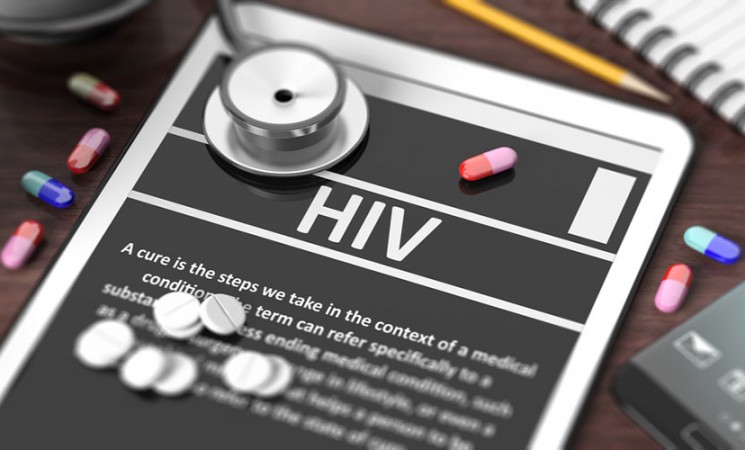Archived Content
This page is archived and provided for historical reference. The content is no longer being updated, and some of the information may have changed over time and could be outdated or inaccurate.

By Wendy Anson, Ph.D.
How does a mere text messaging application sent to unemployed, isolated, non-adhering HIV substance users get them to comply with health care visits and drug prescriptions?
It is known that interventions for adherence can be very effective (Amico, Harman, and Johnson, 2006; de Bruin, Viechtbauer, Hospers, Schaalma, and Kok, 2009; Simoni, Amico, Pearson, and Malow, 2008; Simoni, Pearson, Pantalone, Marks, and Crepaz, 2006), yet very few studies in this area have included substance users. According to researcher Karen Ingersoll, this is because active substance use has a strong and consistent relationship with poor adherence.
The special issue of the APA’s Society for Health Psychology journal, Health Psychology: eHealth/mHealth, funded by the NIH Office of Behavior and Social Sciences Research (OBSSR), described how Ingersoll and colleagues conducted a pilot randomized clinical trial to train and then test bidirectional text messaging system among people residing in nonurban areas who are substance users living with HIV. They assessed the text messaging’s impact on objectively measured antiretroviral (ART) adherence and attendance at visits for HIV care
The group Ingersoll set out to study was primarily male (60.3 percent) and African American (65.1 percent). They had a significant rate of depressive and anxiety disorders; more than one-third screened positive for alcohol dependence, and nearly 40 percent screened positive for drug dependence (including marijuana, cocaine, methamphetamine, and heroin). Participants reported that they used alcohol or illicit drugs on 53 percent of the days in the past month; most were cigarette smokers.
The participants largely lived in nonurban and rural areas and experienced extra challenges such as stigma, poverty, and transportation problems, all of which undermined regular care visits and adherence to ART (Crawford, Sanderson, and Thornton, 2014; Milberg et al., 2001; Muthulingam, Chin, Hsu, Scheer, and Schwarcz, 2013).
This impoverished, stigmatized group was not taking their medicines as they should; nor were they following up on clinic visits.
Given that the most common causes of not taking HIV medicine can be traced to adherence, mood, and substance abuse, the researchers created a bidirectional texting mechanism whereby substance abusers with HIV could respond to daily queries about their medication adherence, mood, and planned illicit drugs or alcohol intake.
Bidirectional mHealth Intervention Tracks Adherence, Substance Abuse in Real Time to Provide Real Help
Ecological Momentary Assessment (EMA) is a strategy for collecting health information as phenomena occur in real time (Shiffman and Stone, 1998). This tool can be helpful for tracking adherence, substance use, or precipitants of these behaviors in real time, so that timely help can be provided (Simon et al., 2008). The researchers reasoned that once patients report nonadherence or when they report substance abuse or depressed mood, a system could send an adherence intervention.
Isolated HIV patients use #M-health bi-directional texting to “reach out and touch” #ART adherence help
A review of the literature showed that, indeed, two way messaging might improve ART adherence, but randomized trials of bidirectional messaging interventions were needed. Ingersoll decided that text messaging would be one effective method for EMA to be implemented in real-world settings.
Bidirectional text messaging using EMA could detect nonadherence in time to deliver tailored, automated adherence interventions.
The researchers created a texting system nicknamed Treatment Extension by TEXTS (TEXTS; Ingersoll et al., 2014). Information, Motivation and Behavior Skills (IMG) Model of Adherence, as well as Social Action Theory (SAT) formed the theoretical foundation of their work. The IMB model of adherence specifies that to change a habit, a person must gather information, build motivation, and identify and practice behavioral skills (Amico, Toro-Alfonso, and Fisher, 2005). SAT specifies the social contexts of health behavior. With both components, Ingersol’s TEXT would promote a new method to maintain relationships with the HIV care providers and other health workers.
The study was a two-condition pilot study randomized clinical trial. Most participants received four queries per day: “Did you take your medication today? Text back MEDS Y or MEDS N.” Mood queries asked “How is your mood right now” asked on a scale of 1 to 4, with 4 extremely positive. Participant responses to initial queries triggered binary intervention messages sent by the TEXT system in response to any of five contingencies.
#M-health bi-directional #adherence intervention puts HIV patients on the right track
Using the web interface, staff helped patients create their own contingent personalized messages based on their responses to medication, mood, and substance use queries. They could create encouraging and sometimes scolding messages for themselves, use favorite song lyrics, or create messages about family or religion. The contingent personalized intervention messages were generated solely by the participants.
Although automated, TEXT queries built social interaction with personalized intervention messages. The phone and texting training made it possible to contact not only the study staff via the cell phone, but also friends and family. With more social interaction together with more motivation and use of behavior skills, researchers hypothesized, the participants’ health outcomes could be improved.
Many of the participants reacted emotionally to the intervention and reported feeling happy “that someone cared.”
Bi-directional #mhealth intervention prompts #HIV patients who abuse substances to take the right path
Adherence in the TEXT condition improved from 66 percent at pre-intervention to 85 percent at post-intervention compared to a change from 62 percent to 71 percent in control participants (p = .04). Proportion of missed visits (PMV) decreased from 23 percent at pre-intervention to 9 percent at post-intervention for TEXT participants, and 31 percent to 28 percent in control participants (p = .12).
Read the Article
Bidirectional Text Messaging for ART Adherence Among Nonurban Substance Users with HIV
Related Reads
A Pilot Randomized, Controlled Trial of an Active Video Game Physical Activity Intervention
About the Author
 Wendy Anson, Ph.D.
Wendy Anson, Ph.D.
Wendy Anson, Ph.D., is senior science writer/editor for OBSSR at NIH. She has written and developed literature reviews, book chapters, reports, grant sections, curriculum and award-winning educational films in the science and social science arena for medical schools, research hospitals, educational broadcasting organizations and universities. Her Ph.D. is in educational psychology and technology.
Photo Credit: Shutterstock/Gts








